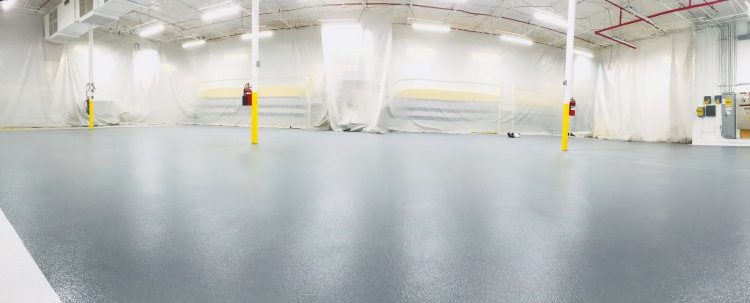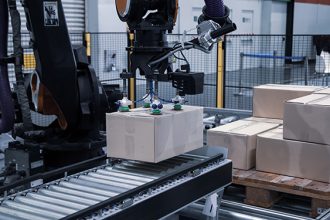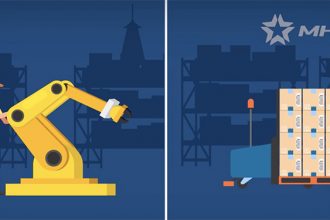When Flooring Takes Center Stage in Robotics

Technology like autonomous mobile robots (AMRs) and automated guided vehicles (AGVs) are proliferating in the warehousing arena. In the next 15 years, in fact, operations without robots will become the minority. There are many reasons why robots are a smart choice for just about any warehouse, but perhaps the most compelling is their ability to increase warehouse productivity anywhere from 2 to 10 times over current, non-automated fulfilment centers.
While the return on investment (ROI) for mobile robots is generally quick and easily justified, you can’t just put them on the floor and let them go. Modifications to software and changes to the warehouse will be needed to accommodate the dramatic changes in throughput that automation will bring.
Flooring surfaces over which robots transport goods are an often-overlooked aspect of automation. When choosing the optimal flooring surface for your automated warehouse, a designer should consider floor loads, traffic patterns, coefficient of friction, required gloss levels, abrasion resistance, and levelness required for optimal performance.
There is a big difference in traffic patterns and floor loads for different types of automation. AMRs use LIDAR for navigation, so their traffic patterns are spread over a wider area. In addition, these systems typically have much lighter loads that tend to max out at 300-400 lbs. Conversely, a goods to person AGV automation system will have loads up to 3,000 lbs. and use navigation systems resulting in a highly defined repeat traffic pattern. Not surprisingly, there is a significant difference in flooring systems required for AMRs vs. AGVs.
Coefficient of friction and gloss are two more important considerations. The operating speed and typical loads carried produce differing COFs for your floor. Light loads with AMRs traveling speeds that may exceed 10 mph require a higher COF than a 2,000 lb load on an AGV operating at a speed of 2-3 mph. In addition, a number of robotics systems depend on downward facing cameras to detect the fiducials on the floor which are their guidance systems. Some of these guidance systems can get confused if the gloss levels are too high and may throw the bot off course.
Abrasion resistance and floor cleanliness are two more important considerations. Because of the heavier loads and repeat traffic patterns in precise areas, flooring systems for AGV applications need to be highly abrasion resistant. Heavy repeat traffic can wear down the flooring surface over time, reducing COF and operating efficiencies. Many AGV flooring systems are quarantined from human traffic. As such, they tend to accumulate debris from spilled products, and particulates on the flooring surface can dramatically increase the wearing of flooring surfaces. Excessive debris on the flooring surface can also lead to slip errors and decreased efficiency of the automated delivery systems.
Finally, don’t overlook the importance of floor levelness when selecting the best flooring surface for your automated warehouse. Many AGV systems only have about ½” of clearance between the top of the floor and the bottom of the bot. Therefore, a minor swale or local high spot in the floor can potentially cause the robot to bottom out or veer off course. To overcome this potential issue, care should be taken to select a flooring system that can be installed to comply with the levelness parameters of the selected automation system.
Warehouse automation through the use of robotic deployment systems are rapidly becoming the dominant form of upgrades to warehouses across the world. Increased productivity provides very short and significant ROI’s to these upgrades. The quantum leaps in productivity that are achieved ensure that this technology will be pervasive in the Material Handling Industry for years to come. Be sure to consult with your Robotics OEMs, designers, and flooring providers to be sure that all important design factors are considered before finalizing the selection of automation.
To read more about the Buyer’s Journey:
How Robotics Can Increase Your Throughput
Sharing Best Practices – Post Implementation
How To Avoid Potential Pitfalls Of Robotics Ownership
Your Guide To Successful Metrics For Automation Implementation
Orchestrating Workflows Within Your Distribution Center
Justifying Robotics In Your Operations
Robotics – The Buyer’s Journey, Part II
To learn more about The Robotics Group (TRG): https://www.mhi.org/robotics



